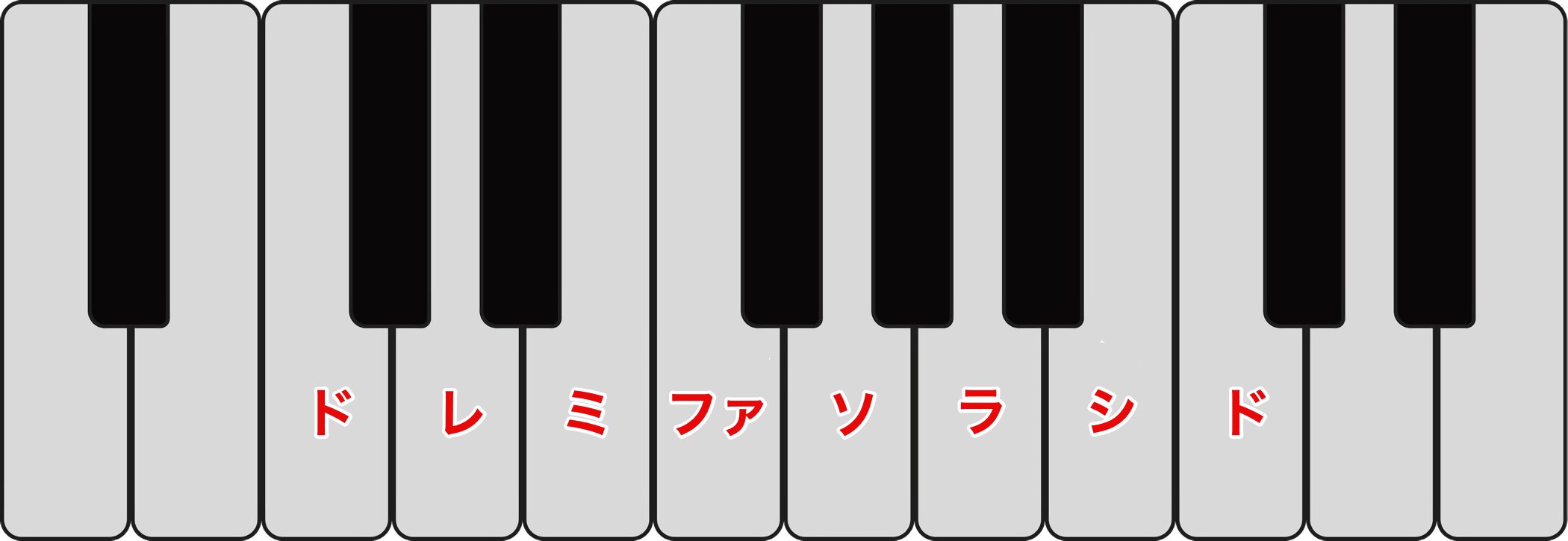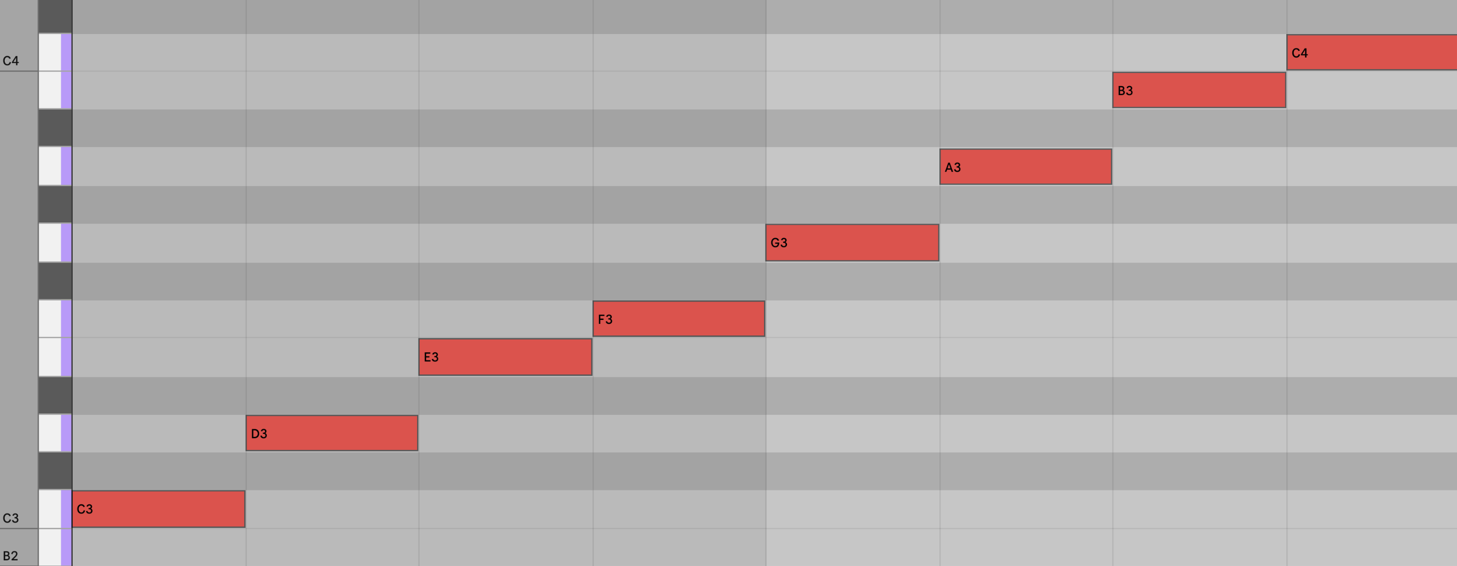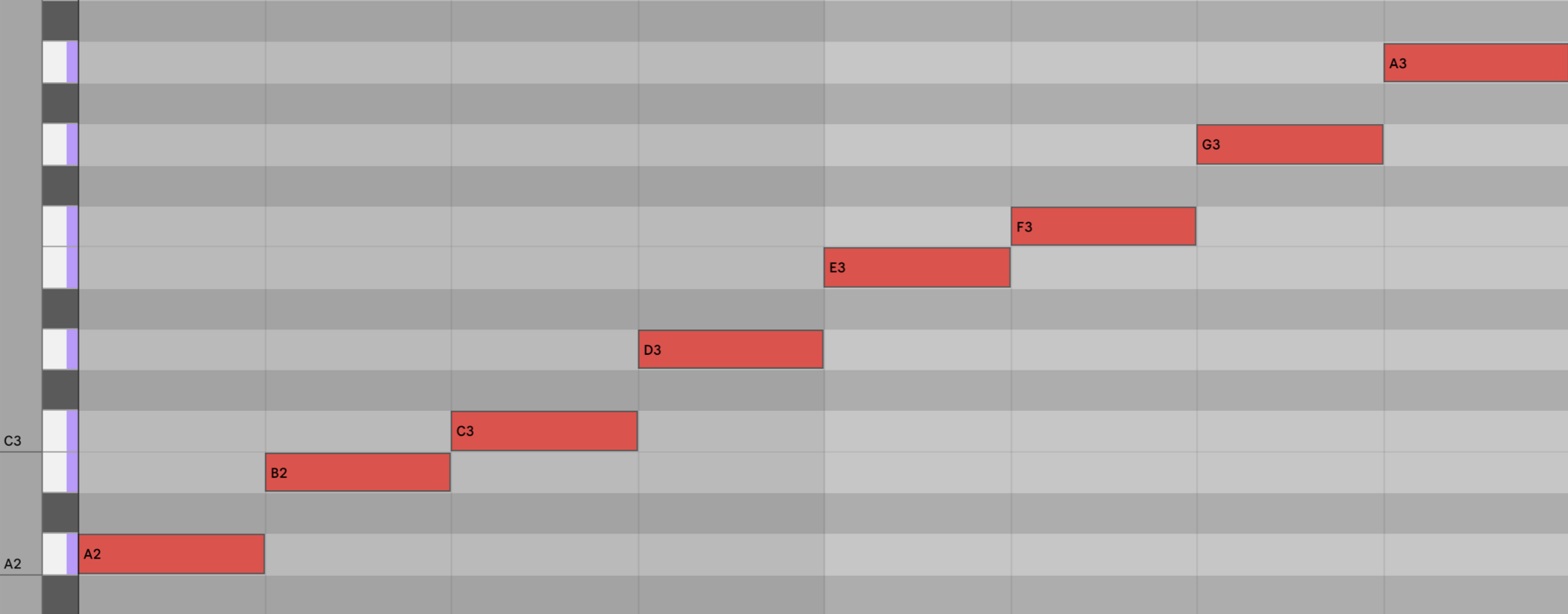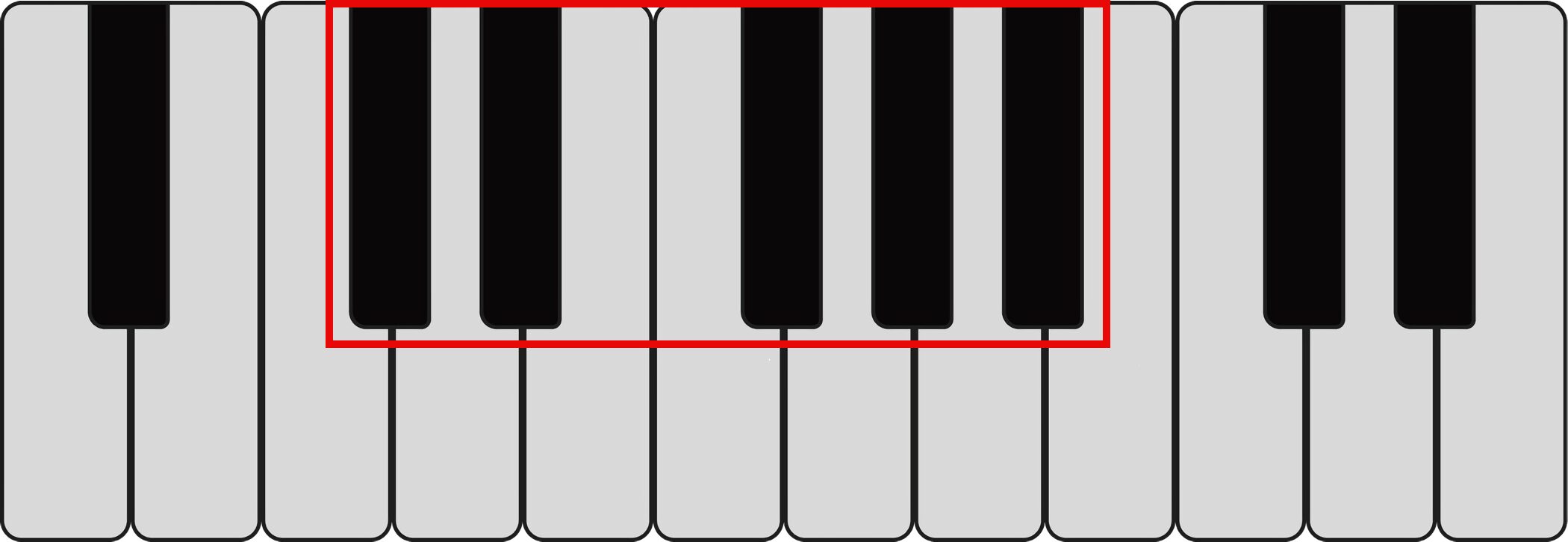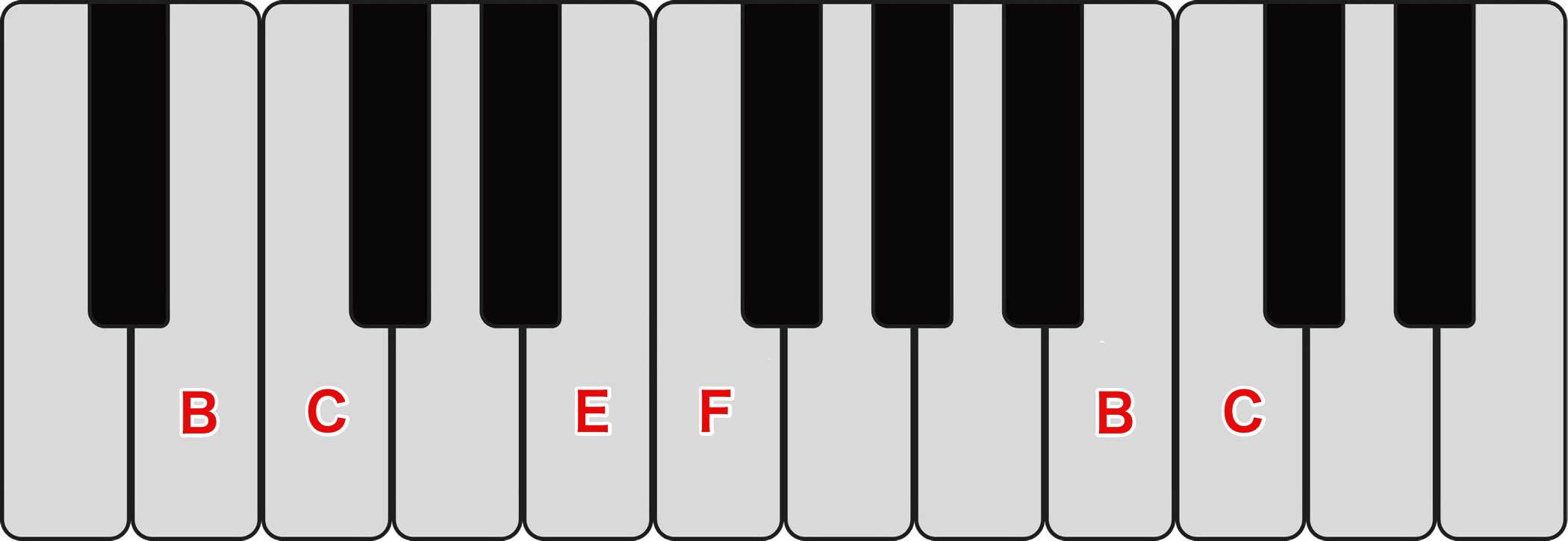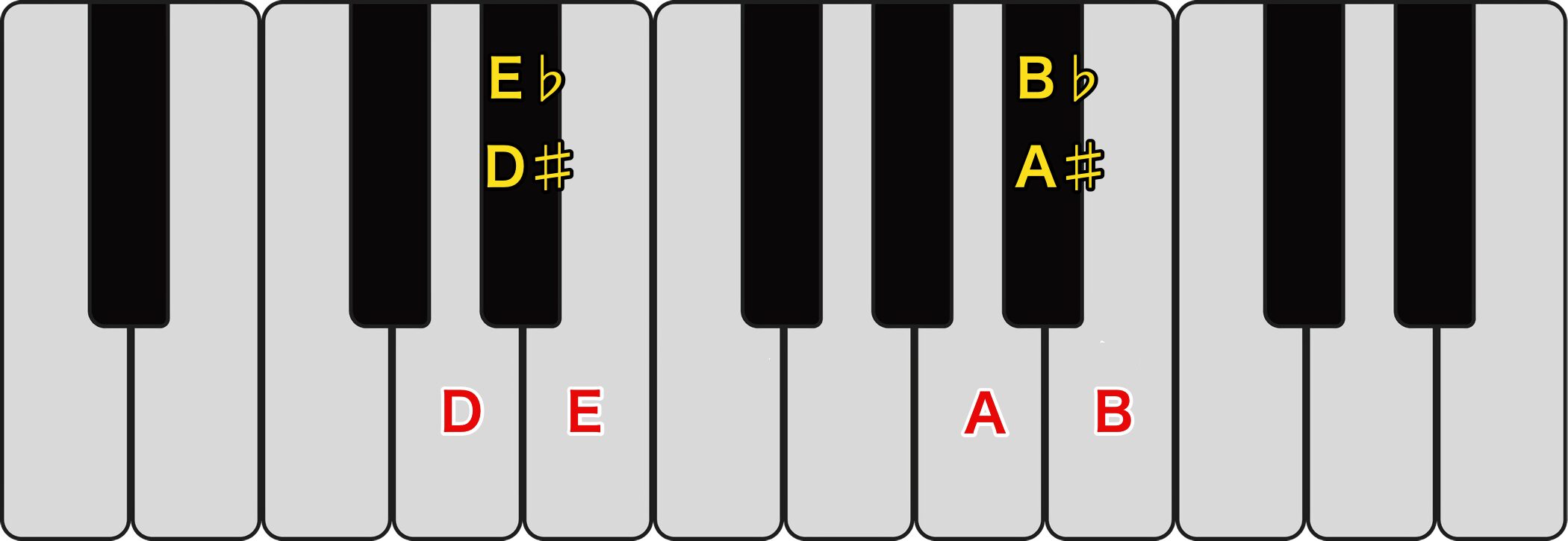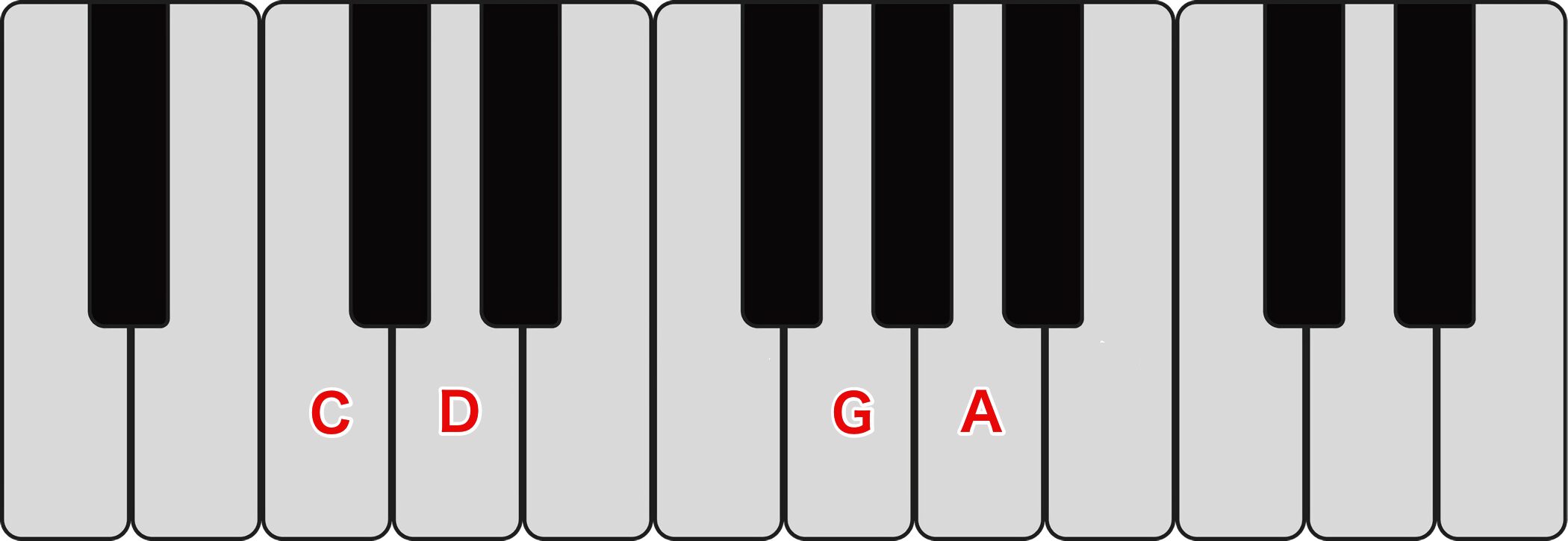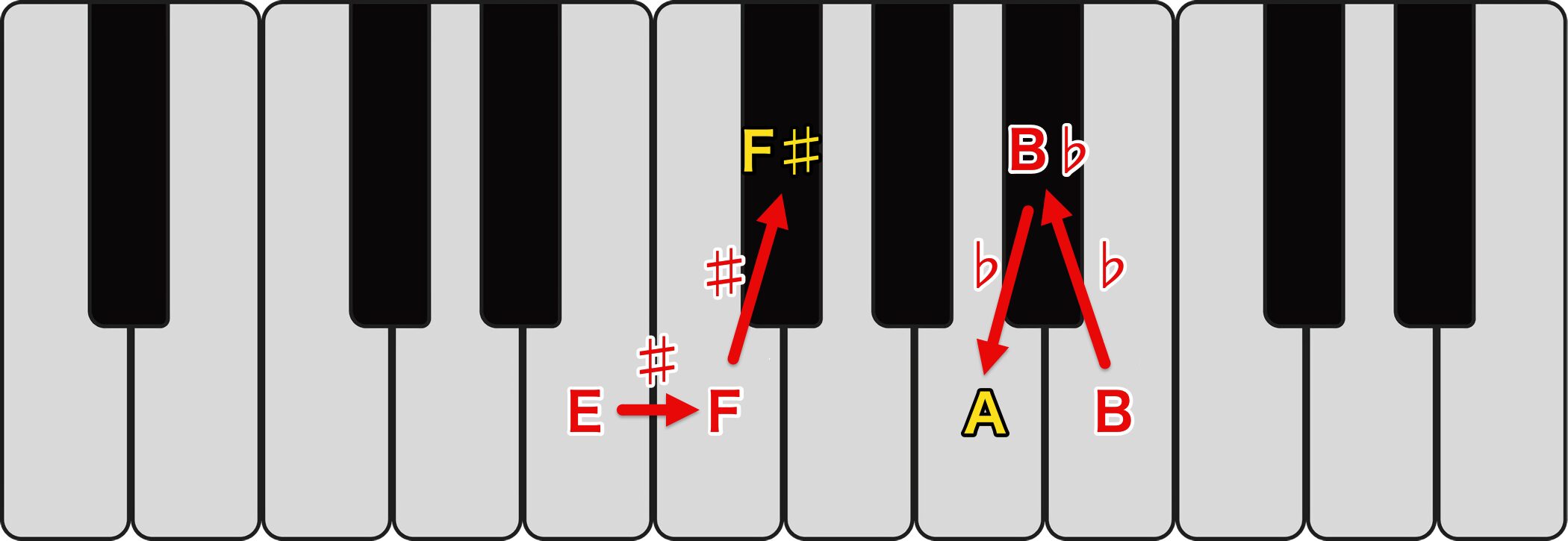音名表記について/音楽理論講座
音楽理論を習得して作曲の可能性を大きく広げる

このカテゴリーを通して、音楽理論を解説していきます。
- 作曲する曲がいつも同じ雰囲気になってしまう
- 曲をコピーしてみたいけど、コードがわからない
- 好きなアーティストや、作曲家の曲を解析したい
このような問題や要望も、音楽理論を学ぶことで解決可能です。
譜面が苦手でもまずはDAW上でF確認していきますので難しいというイメージを捨てて学んでいきましょう。
“実際に曲が作れるようになる”を目標とし、最適と思われる順で無理が出ないように解説を進めていきます。
それでは、早速解説へ入っていきます。
音楽理論を習得するために必須の音名を把握する
音楽理論を始めるにあたって、絶対に確認しておかなければならないことがあります。
皆様もコードなどで、画像のような表記を目にしたことがあると思います。
DAW(音楽制作ソフト)上でも同様に使用されます。
音楽を楽しむ上で、これらのアルファベットは欠かすことができない知識です。
こちらは、皆様ご存知の「ドレミファソラシド 」です。
実際に、「ドレミファソラシド 」を打ち込んでDAW上で確認してみましょう。
そうすると、「C D E F G A B C」と表記されています。
少し覚えるのが大変そうですね。
これを「A」を主役として「ラシドレミファソラ」と並び替えてみましょう。
A B C D E F G とアルファベット順に並びます。
覚えにくいという方は、是非試してみてください。
半音を表すシャープとフラット
白鍵の間には黒鍵が存在しています。
ここで登場するのが、#(シャープ)と ♭ (フラット)です。
- # : 半音高く演奏する
- ♭ : 半音低く演奏する
という意味を持っています。
半音とはなんでしょうか?ピアノで確認してみましょう。
「EとFの間」「BとCの間」どちらも黒い鍵盤がありません。
この隣合わせの関係を半音と言います。
#は音を半音高く。♭は音を半音低く。
黒鍵は、各音程に#や♭を付けて表記されます。
(白鍵上でもE#などがあります)
半音2つ分の全音
そして、この半音2つ分(半音+半音)を全音と言います。
「CとDの間」は、半音2つ分になります。「GとA」も同様ですね。
全音、半音の関係はご理解いただけたでしょうか。
ダブルシャープとダブルフラット
DAWを使用してくと、多くの場合は上記の表記で済んでしまいます。
しかし、世の中にはこのようなものもあります。
ここまでお読みいただいた皆様にとって、決して難しくありません。併せて覚えてしまいましょう。
- ダブルシャープ(楽譜上のXの記号) : シャープで半音上げた音をさらに半音上げる
- ダブルフラット(楽譜上の♭2つの記号) : フラットで半音下げた音をさらに半音下げる(
鍵盤上では、「Eのダブルシャープ」は「Fシャープと同じ位置」、「Bのダブルフラット」は「Aと同じ位置」ということですね。
出現頻度は「#/♭」より遥かに少ないですが、講座を進めていく中で、後に重要な意味を持ってきます。
DTMで作曲をする上でも欠かせないこの音名表記、ぜひ覚えてくださいね!







